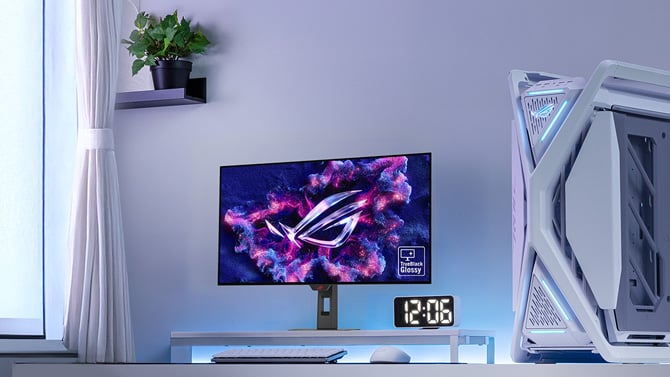Asus has just announced two new high-end gaming monitors, the Strix OLED XG32UCWMG and XG32UCWG, and they bring some major upgrades for anyone serious about their screen quality. These are the first 32-inch monitors in the ROG Strix line to use Asus’s new “TrueBlack” Glossy WOLED panel, and based on the comparison shots I’ve seen, the improvement is obvious. Blacks look deeper, colors pop more, and there’s less glare – even in brighter rooms.
Both models offer 4K resolution and the kind of ultra-fast specs gamers want: up to 240Hz refresh rate for smoother motion, a near-instant 0.03ms response time, and support for all the major sync technologies (G-Sync and FreeSync Premium Pro) to prevent screen tearing. You’ll also get Dolby Vision for HDR gaming and movies, plus wide color coverage for more lifelike visuals.

The step-up UCWMG model adds a few extras that power users will appreciate. It includes Thunderbolt 4 for high-speed connections to laptops and other devices, a built-in KVM switch so you can easily control multiple computers with one keyboard and mouse, and a dual-mode refresh rate feature that can push the screen to a blazing 480Hz if you drop the resolution to Full HD.
Read more: TP-Link’s Wi-Fi 7 Mesh System Hits Lowest Price Since Black Friday
But what really jumps out is the new OLED panel. Asus is calling it “TrueBlack” Glossy WOLED, and to my eye, it’s a noticeable step up from previous glossy OLEDs and even the newer QD-OLED options. Blacks look truly black, details are sharper, and the screen handles reflections better, which makes it more usable in normal lighting conditions, not just in a dark room.
The design has Asus’s signature gamer look, including customizable RGB lighting and an “Anime Matrix” LED display on the back that can show custom graphics or system info. Personally, I don’t need the extra lights, but I know plenty of gamers who enjoy the flair.
Both models are expected to launch this summer. Asus hasn’t shared pricing yet, but with premium features like Thunderbolt 4 and the brand-new OLED panel, these monitors will likely sit at the higher end of the market.
[Image credit: ASUS]
















